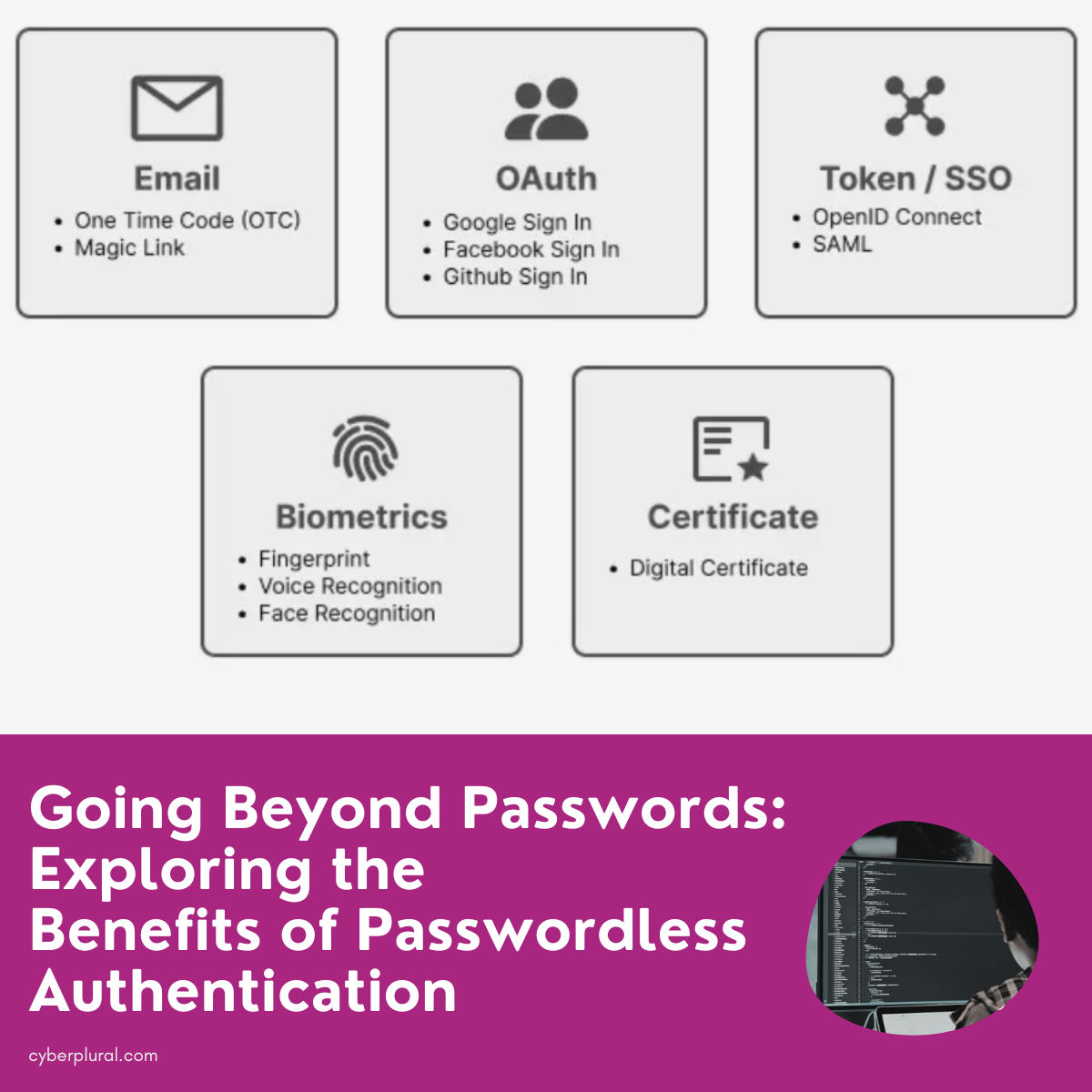Going Beyond Passwords: Exploring the Benefits of Passwordless Authentication

Passwordless authentication is an increasingly popular method of securing online accounts and devices. As the name suggests, this approach eliminates the need for passwords, instead relying on other means of verifying a user’s identity. In this blog post, we will explore the implementation of passwordless authentication and its benefits.
To implement passwordless authentication, organizations can use a variety of methods, including biometric authentication (such as fingerprint or facial recognition), hardware tokens (such as security keys), or one-time passcodes sent via email or SMS. These methods offer a more secure and convenient alternative to traditional password-based authentication, as they are less vulnerable to hacking and eliminate the need for users to remember complex passwords.
One of the key benefits of passwordless authentication is improved security. Passwords are notoriously vulnerable to attacks, such as phishing and brute force attacks, which can lead to data breaches and identity theft. Passwordless authentication methods, on the other hand, rely on unique physical characteristics or temporary codes that are much harder to replicate or steal.
Another benefit of passwordless authentication is improved user experience. Traditional passwords can be difficult to remember and manage, leading to frustration for users. Passwordless authentication eliminates this issue, making it easier and more convenient for users to log in to their accounts.
Implementing passwordless authentication can also help organizations meet regulatory requirements around data protection. With the increasing focus on privacy and data security, many regulatory bodies are encouraging or mandating the use of more secure authentication methods.
However, it is important to note that passwordless authentication is not a silver bullet for security. As with any security measure, it is important to implement it correctly and monitor it regularly to ensure its effectiveness.
In conclusion, passwordless authentication offers a more secure and convenient alternative to traditional password-based authentication. By implementing passwordless authentication methods, organizations can improve security, enhance user experience, and meet regulatory requirements around data protection.

Leave a Reply